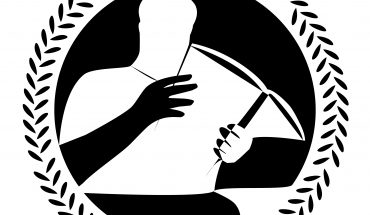“Doomsday Clock” by Geoff Johns and Gary Frank
BY MATTHEW HOANG STAFF WRITER
In 1986, DC Comics published “Watchmen” by Alan Moore and Dave Gibbons, a comic book series that presented an alternate history where the existence of real-life superheroes affected the course of the Cold War. The series not only tackled sociopolitical issues but also served as a deconstruction of the superhero genre.
The series was critically acclaimed and is now regarded by some critics as the greatest comic book ever published.
Despite its immense success, “Watchmen” has had a polarizing effect on the superhero genre. Its darker, grittier and postmodern take on superheroes influenced future comic book stories towards darker characters and plot lines. This subsequent era in the comic book world is sometimes known as the Dark Age of Comic Books.
In 2016, DC Comics launched another attempt to reboot its comic continuity after their previous line-wide reboot in 2011, known as the “New 52.” This soft reboot, titled “Rebirth,” sought to bring back elements that had been lost during the “New 52” including the hope and optimism of earlier superhero comics.
Written by Geoff Johns and illustrated by Gary Frank, the crossover story between “Watchmen” and DC characters was finally told in 2017’s “Doomsday Clock.”
The book takes place seven years after Ozymandias, a.k.a. Adrian Veidt, dropped an alien squid on New York City, killing millions, at the end of “Watchmen.” Veidt, now a fugitive, hatches one final plan to save his world — a world that has descended into anarchy.
Joined by a modern Rorschach, an antihero of the original “Watchmen,” and two new “Watchmen” characters – Mime and Marionette – Veidt and his squad travel to the DC universe to find Dr. Manhattan with hopes that he can save their world. During their mission, they run into classic DC characters such as Batman and Superman and those interactions restore the DC timeline.
“Doomsday Clock” primarily serves as a rebuttal to the dark legacy that “Watchmen” created for the comic book industry. It acts as a love letter to Superman.
“Superman will show them the way,” Dr. Manhattan said as he followed Superman’s trail of influence across the universe. “He is the center of this universe,” he mused.
Superman’s idealism is strong enough that he can move even Dr. Manhattan, the most apathetic being of all. The hope and optimism he represents is far preferable to the cynical nihilism that “Watchmen” tried to peddle.
The strength of this message is best conveyed by Johns’ handling of the “Watchmen” characters. He manages to accurately capture the personalities that Moore created. Johns also includes homages and references to the original work that, while faithful to Moore’s style, do not feel derivative.
In addition to the writing, the art must also be praised. Like original artist Dave Gibbons, Frank’s art style tends to be more realistic. Frank’s art is similar enough to Gibbons’ style, but with slightly more detail — particularly with the faces. His art is able to capture the look and feel of the original “Watchmen” without directly copying it, which goes a long way in making this book a true “Watchmen” sequel.


